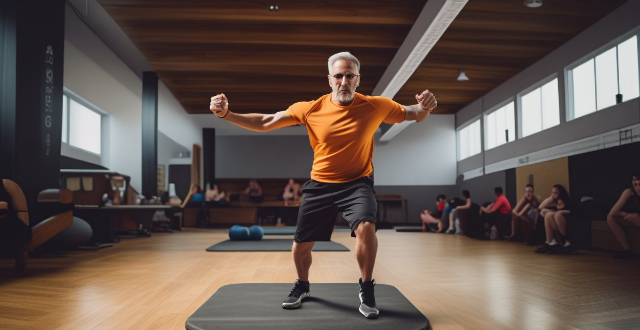Visualization, also known as mental imagery or mental practice, is a technique used by athletes to enhance their performance. In sports psychology, visualization plays a crucial role in enhancing sport performance. Benefits of visualization include improved focus and concentration, increased confidence and self-efficacy, enhanced motor learning and skill acquisition, better emotional control and coping strategies, and improved recovery and rehabilitation. To use visualization effectively, set clear goals, create a mental image, practice regularly, combine with physical practice, stay positive, and seek professional guidance.

Visualization in Sports Psychology
Visualization, also known as mental imagery or mental practice, is a technique used by athletes to enhance their performance. It involves creating a mental picture of the desired outcome or action in order to improve physical skills and performance. In sports psychology, visualization plays a crucial role in enhancing sport performance.
Benefits of Visualization in Sports Performance
Improved Focus and Concentration
Visualization helps athletes to focus on their goals and stay concentrated during competitions. By mentally rehearsing the desired outcome, athletes can block out distractions and maintain their focus on the task at hand. This improved concentration leads to better decision-making and faster reactions during games.
Increased Confidence and Self-Efficacy
Visualization can boost an athlete's confidence and self-efficacy by allowing them to see themselves successfully completing a task before actually doing it. This positive mindset can help reduce anxiety and increase motivation, leading to improved performance.
Enhanced Motor Learning and Skill Acquisition
Visualization has been shown to activate the same neural pathways as physical practice, which means that mentally practicing a skill can lead to actual improvements in motor learning and skill acquisition. This is particularly useful for athletes who are recovering from injuries or unable to physically practice due to other reasons.
Better Emotional Control and Coping Strategies
Visualization can help athletes develop effective coping strategies for dealing with stress and pressure situations. By mentally preparing for potential challenges and setbacks, athletes can learn to regulate their emotions and maintain composure during competitions.
Improved Recovery and Rehabilitation
Visualization can also aid in recovery and rehabilitation after injuries. Athletes can use visualization techniques to imagine their bodies healing and regaining strength, which can help speed up the recovery process and reduce pain levels.
How to Use Visualization in Sports Performance
1. Set Clear Goals: Identify specific goals that you want to achieve through visualization. These goals should be realistic, measurable, and time-bound.
2. Create a Mental Image: Imagine yourself performing the desired action or achieving your goal in as much detail as possible. Use all your senses (sight, sound, touch, smell, taste) to make the image more vivid and realistic.
3. Practice Regularly: Consistency is key when it comes to visualization. Dedicate a few minutes each day to practice your mental imagery exercises. The more you practice, the more effective it will become.
4. Combine with Physical Practice: While visualization can be a powerful tool on its own, combining it with physical practice can lead to even greater improvements in performance. Use visualization as a supplement to your regular training routine.
5. Stay Positive: Maintain a positive attitude throughout your visualization exercises. Avoid negative thoughts or images that could hinder your progress or decrease your confidence levels.
6. Seek Professional Guidance: Consider working with a sports psychologist or coach who specializes in visualization techniques to ensure that you are using effective strategies and maximizing your potential benefits.